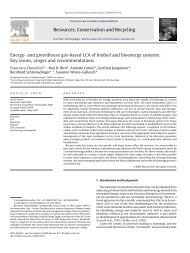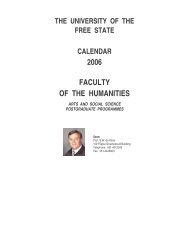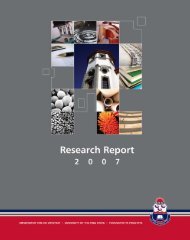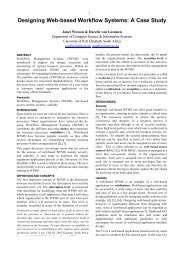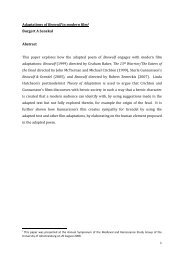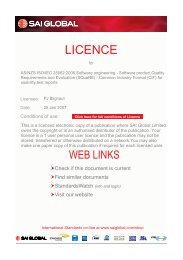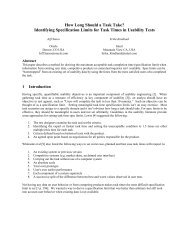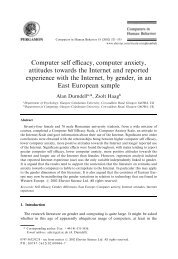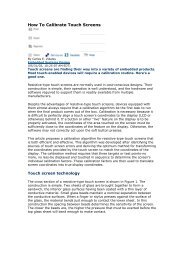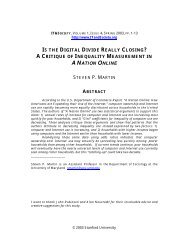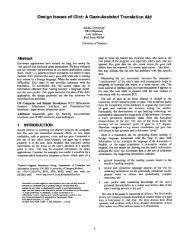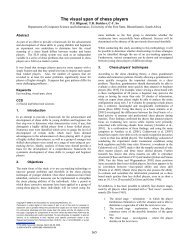the role of livestock in developing communities: enhancing ...
the role of livestock in developing communities: enhancing ...
the role of livestock in developing communities: enhancing ...
You also want an ePaper? Increase the reach of your titles
YUMPU automatically turns print PDFs into web optimized ePapers that Google loves.
A short overview note: <strong>in</strong> search <strong>of</strong> a paradigm?<br />
Author: J van Rooyen<br />
Livestock systems are <strong>the</strong> largest land-use activity on earth (Herrero et al, p. 10), while global <strong>livestock</strong><br />
production is challenged to double by 2020. A central focus to this sector is to ensure that benefits – <strong>in</strong><br />
particular to small holders – are reaped from this ‘<strong>livestock</strong> revolution’ (Burrow, p. 18) <strong>in</strong> a ‘susta<strong>in</strong>able’<br />
manner and by do<strong>in</strong>g this, to give good effect to <strong>the</strong> ‘multifunctional’ nature <strong>of</strong> <strong>livestock</strong> <strong>in</strong> develop<strong>in</strong>g <strong>communities</strong>.<br />
Seventy percent <strong>of</strong> people liv<strong>in</strong>g <strong>in</strong> extreme poverty are located <strong>in</strong> rural areas <strong>of</strong> develop<strong>in</strong>g countries.<br />
Despite <strong>the</strong>ir production potential, small-scale rural producers (SPR’s) confront serious constra<strong>in</strong>ts<br />
<strong>in</strong> pr<strong>of</strong>it<strong>in</strong>g from <strong>the</strong>ir resources due to lack <strong>of</strong> basic <strong>in</strong>frastructure, limited access to services for production,<br />
f<strong>in</strong>ance and bus<strong>in</strong>ess development and limited ability to <strong>in</strong>fluence favourable policy. Toge<strong>the</strong>r with <strong>the</strong><br />
background paper, <strong>the</strong> keynote address provided an excellent focus to this symposium, sett<strong>in</strong>g out <strong>the</strong><br />
trends, issues and challenges concern<strong>in</strong>g <strong>the</strong> multifunctionality <strong>of</strong> <strong>livestock</strong> for develop<strong>in</strong>g <strong>communities</strong>.<br />
Various <strong>the</strong>mes focussed <strong>the</strong> proceed<strong>in</strong>gs <strong>of</strong> <strong>the</strong> satellite symposium. These <strong>in</strong>cluded aspects such as <strong>the</strong><br />
<strong>role</strong> <strong>of</strong> development projects; gender equality, power relationships, distributional issues and empowerment;<br />
<strong>livestock</strong> production and <strong>the</strong> environment; food, nutrition and health; risk factors; <strong>in</strong>tensification and access<br />
to supply cha<strong>in</strong>s; susta<strong>in</strong>ability; and poverty alleviation.<br />
Contributions all supported <strong>the</strong> notion that <strong>livestock</strong> production generally fulfils a multipurpose function<br />
<strong>in</strong> develop<strong>in</strong>g environments, rang<strong>in</strong>g from:<br />
• an economic perspective – <strong>livestock</strong> contribute to food supply and cash <strong>in</strong>come, to traction and<br />
fertiliser and to a valuable asset portfolio and <strong>in</strong>vestment opportunity;<br />
• a social viewpo<strong>in</strong>t – status, power relationships, gender balance and distribution <strong>of</strong> benefits are<br />
relevant when <strong>livestock</strong>’s contribution is analysed; In East Africa, where <strong>the</strong> private sector has not yet<br />
recognised <strong>the</strong> importance <strong>of</strong> research, <strong>in</strong>creased cooperation between <strong>the</strong> public and private sectors<br />
was necessary <strong>in</strong> <strong>the</strong> development <strong>of</strong> solutions. Not enough is known about knowledge transfer,<br />
<strong>in</strong>clud<strong>in</strong>g appropriate access, packag<strong>in</strong>g and delivery to different partners (eg. private sector, farmers<br />
and researchers). The real knowledge needs <strong>of</strong> different stakeholders must also be <strong>in</strong>vestigated, as also<br />
<strong>the</strong> different methods <strong>of</strong> knowledge acquisition used by <strong>the</strong>m;<br />
• <strong>the</strong> natural environment is <strong>in</strong>creas<strong>in</strong>gly relevant, because <strong>livestock</strong> owners are expected to fulfil an<br />
important stewardship <strong>role</strong> <strong>in</strong> ‘wise’ resource utilisation, while <strong>livestock</strong> production is <strong>of</strong>ten also<br />
considered as a ‘high-cost, natural resources <strong>in</strong>tensive’ food production system, requir<strong>in</strong>g energy <strong>in</strong>puts<br />
for both animal feed and human food production – a double energy dose <strong>the</strong>refore with ‘high carbon<br />
footpr<strong>in</strong>t’ implications. Environmental management systems (EMS) are methodical approaches to<br />
organis<strong>in</strong>g <strong>the</strong> plann<strong>in</strong>g, implementation and review <strong>of</strong> <strong>the</strong> impact on <strong>the</strong> environment us<strong>in</strong>g a “plan, act,<br />
monitor and review” cycle so called adaptive management.<br />
The many <strong>role</strong>s <strong>of</strong> <strong>livestock</strong> <strong>in</strong> develop<strong>in</strong>g <strong>communities</strong>, <strong>the</strong> issue <strong>of</strong> diversity and how to deal with it and<br />
possible conflicts <strong>in</strong> this context, clearly comes <strong>in</strong>to question – with this also <strong>the</strong> choices <strong>of</strong> <strong>in</strong>tervention<br />
mechanisms and appropriate development strategies. This all leads to a central question that must be considered<br />
critically <strong>in</strong> context <strong>of</strong> <strong>the</strong> topic <strong>of</strong> <strong>the</strong> symposium, viz, “does <strong>the</strong> current <strong>livestock</strong> development<br />
paradigm provide for <strong>the</strong> necessary understand<strong>in</strong>g and scope to enhance such diversity and multifunctionality<br />
<strong>in</strong> develop<strong>in</strong>g <strong>communities</strong>?” Research and development needs must orig<strong>in</strong>ate from <strong>the</strong> community,<br />
and community members must drive <strong>the</strong> research process. Researchers must be sensitive to this and<br />
develop <strong>the</strong> necessary skills to work with farmers.<br />
Multifunctionality must be considered as an important focus for <strong>the</strong> design <strong>of</strong> ‘development projects that<br />
can make a difference’. The keynote address by Pell et al explored ways how to <strong>in</strong>clude such considerations<br />
and various critical components were identified, <strong>in</strong> a systems context, to ensure that susta<strong>in</strong>ability is sufficiently<br />
considered. This paper, toge<strong>the</strong>r with various panel <strong>in</strong>puts on <strong>the</strong> relevant cross-cutt<strong>in</strong>g <strong>the</strong>mes<br />
and <strong>the</strong> work<strong>in</strong>g group contributions, <strong>in</strong>deed provided an <strong>in</strong>telligent framework to explore <strong>the</strong> validity <strong>of</strong><br />
<strong>the</strong> current paradigm. Some notable viewpo<strong>in</strong>ts from <strong>the</strong> symposium are referenced briefly:<br />
Proceed<strong>in</strong>gs <strong>of</strong> <strong>the</strong> Satellite Symposium: WCAP 3



